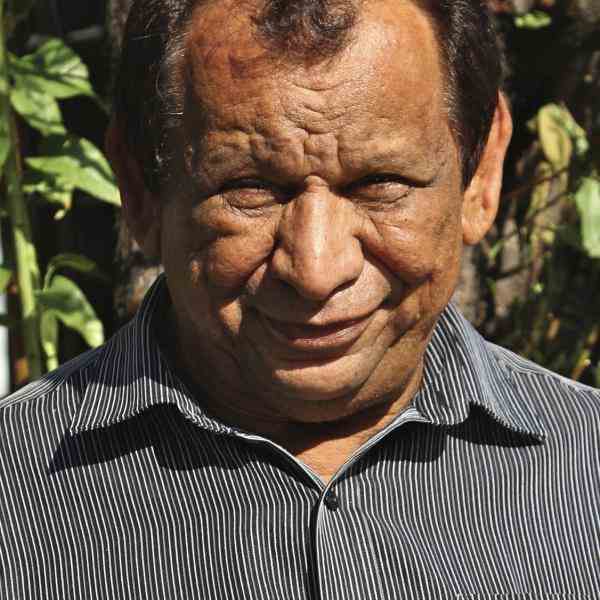Introduction
Ferenc Orsós has developed a Roma-centric curriculum designed to instill a sense of pride and dignity in the Roma children of Central and Eastern Europe. Through his program, which operates both in the classroom and in the home, he is striving to ensure that Roma children succeed at school and that the Roma culture will survive well into the twenty-first century.
The New Idea
Taking advantage of new legislation in Hungary that requires schools to implement a minority education program, Ferenc Orsós has launched a program to train teachers in special techniques that he has developed, over a seven year period, to teach Roma children. His work represents one of the first serious efforts within the Hungarian educational system to address the needs of the most underserved minority group in Hungary and Central and Eastern Europe. However, Ferenc's work goes beyond simply wanting to improve the test scores of Roma children. He is fighting to preserve his people's cultural heritage, which is disappearing in this era of cultural homogenization.
Ferenc's work is similar to Slovak and Romanian intellectual leaders of the nineteenth century who, during a time when they represented relatively small and insignificant minorities with the Austro-Hungarian Empire, used cultural mythology and their indigenous languages, to instill a sense of ethnic pride in their people. Ferenc's work is more complicated than those activists of the nineteenth century, because, unlike Slovak and Romanian culture, Roma culture has always been held in the lowest regard by all other ethnic groups in the region. Therefore, he must, through his program, combat a sense of self-loathing that many children have about their culture. By teaching Roma students about their cultural heritage, music, dance, and mythology, Ferenc and the "patrons" whom he recruits to work with children after school, are building up awareness, self-confidence, and pride. Ferenc has found that these qualities directly increase the children's success in academic undertakings. The goal is for them to be able to comfortably take their place in the Hungarian educational system and the society-at-large without sacrificing their own cultural identity.
The Problem
The continuous and overt efforts of the Hungarian government to assimilate the Roma minority have had a devastating effect on Roma children. Many have lost a strong sense oftheir identity and refuse to speak their language, because they are so ashamed of their Roma heritage. In some cases, the self-hate that children feel is so strong that they cut off all ties to their families in the belief that this is the only way in which they can succeed.
Unfortunately, the vast majority of Roma do not flourish in the school environment, and they very rarely reach institutions of higher education. Only one half of one percent of all Roma young people reach the university level. Poverty, large families, and chronic unemployment put the vast majority of Roma children at risk for poor academic performance. During this transition period to a market economy, the Roma have been one of the hardest hit groups in the region. In some regions and cities, Roma unemployment reaches 100 percent. Moreover, when companies experience an economic downturn their Roma employees are almost always the first to be laid off. The elements are in place for a cycle of poverty, alcoholism, and hopelessness. In response to the problem of Roma education, the Hungarian parliament has passed legislation that mandates schools to provide minority education programs. However, the parliament has not offered an example of the curriculum or teacher training that will be necessary to put the new laws into practice. As a result, even those teachers wishing to implement Roma-centric components in their classroom lessons, do not know how to do so. Instead, the extra funds that the government provides for minority education programs goes to teachers in the form of hardship pay for those who have Roma students.
The Strategy
Ferenc Orsós began working with Roma children in 1979. He soon realized that it was very difficult for them to keep up with the demands of school, and he eventually found that their lack of knowledge about their own culture is a direct link to their failure, because of its relationship to their self-confidence. However, he has witnessed a renaissance of Roma culture among the Roma youth he has worked with, and he believes that an ambitious young nation is on the horizon.
In the beginning of Ferenc's work he developed courses on Roma identity in primary schools. When asked to describe his approach to education, he likes to give the example of a young boy he taught in the town of Csapi. The young boy, Imre Gogdan, was failing in school. However, Ferenc managed to turn the boy around and change his attitude about school by first teaching him some Roma folklore. He helped the boy memorize many Roma songs and stories, and then he incorporated them into the boy's lessons. This approach to learning helped to improve the boy's performance, and he became a very successful student. With his improved self-esteem, he also began to win the acceptance of his non-Roma classmates.
Based upon this type of success, Ferenc has developed a program that can be implemented by teachers in their classrooms. He has also developed an after school program that uses members of a Roma student's extended family as mentors who teach them about their culture and teachers who help them with their academic work. Because Ferenc's model has been successful, schools are now inviting him to implement his program so that they can fulfill the requirements under the minority education law.
The Person
Ferenc belongs to the group of gypsies called Beash and comes from a large family of eight children. His mother, he reports, was a traditional Roma mother, and his father and most of his brothers are manual laborers. He was never encouraged in school but decided to succeed in spite of the obstacles. He is a caretaker of Roma culture in the southern Hungarian city of Pecs where he lectures with representatives from Roma music and dance groups. He has taught at the Gandhi School in Pécs and has trained American Peace Corps workers who came to Hungary to work with Roma communities; he is the leader of the Roma Culture in Hungary Program sponsored by the Peace Corps. He was a founder of the Roma Radio in 1992 and is the co-president of the National Gypsy Culture and Traditions Association. He was also the leader of the Gypsy Club from 1983-1992. He was the co-director of two documentary films about the gypsies that were made for television, and he has organized the publication in Hungarian and English of The Gypsy Road, written by a former Peace Corps volunteer.




